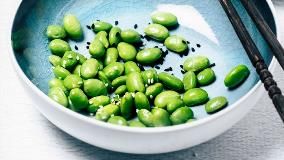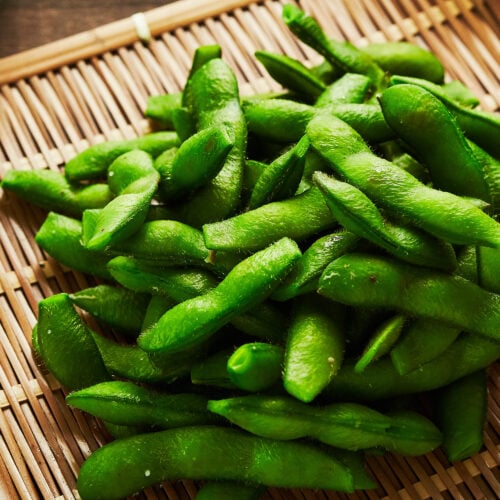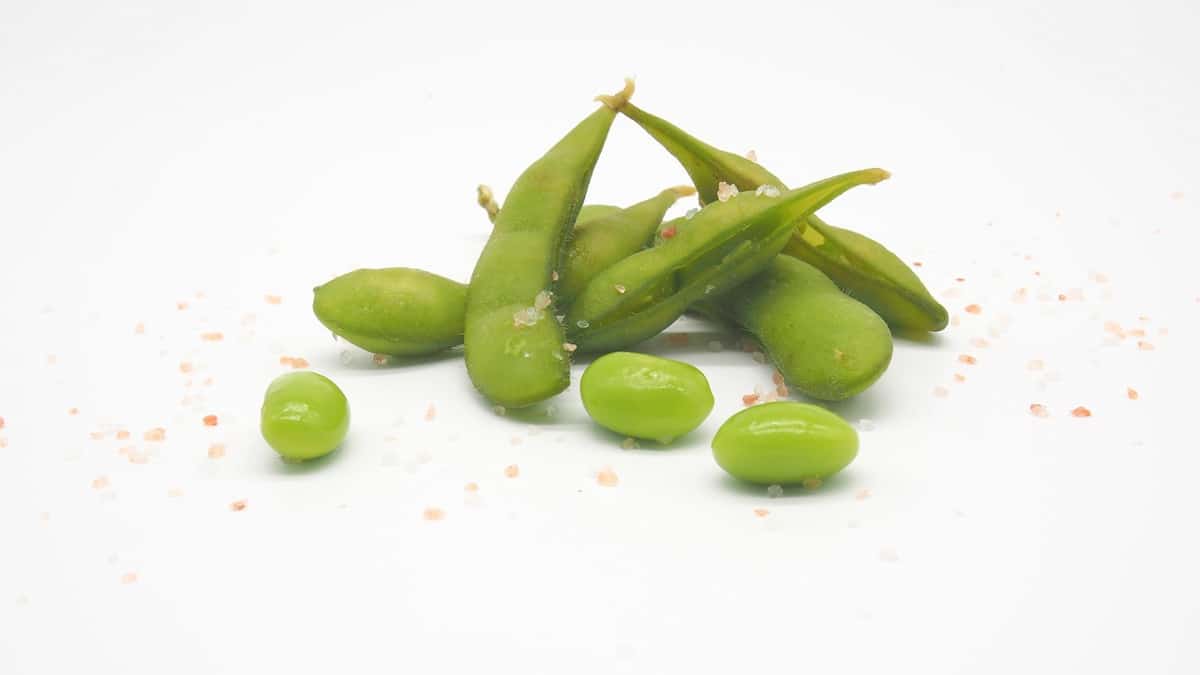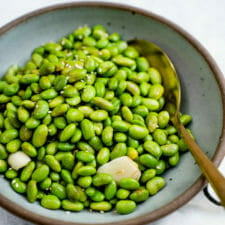Introduction

In the world of soybeans, two varieties have captured the attention of health-conscious individuals and culinary enthusiasts alike: Edamame and Mukimame. While both share a common origin and are packed with nutritional benefits, they differ in their preparation and consumption methods. Edamame, known for its vibrant green color and tender texture, has become a popular appetizer and snack option. On the other hand, Mukimame is a more mature version of soybeans that are shelled and can be used in a variety of dishes. Understanding the characteristics and differences between these soybean varieties can help individuals make informed choices when incorporating them into their diet.
Overview Of Edamame And Mukimame Soybean Varieties
Edamame and Mukimame are two distinct varieties of soybeans that offer unique taste, texture, and nutritional profiles. Edamame, often referred to as “young soybeans,” are typically harvested before they mature fully. They are known for their vibrant green color, firm texture, and slightly sweet taste. On the other hand, Mukimame refers to matured soybeans that have been shelled, allowing for easier consumption and versatility in different culinary endeavors. Both varieties provide a rich source of plant-based protein, fiber, vitamins, and minerals, making them excellent choices for individuals looking to incorporate wholesome and nutritious options into their diet.
Edamame Soybeans
Edamame soybeans are young and immature soybeans that are harvested before they fully ripen. They are known for their vibrant green color, firm texture, and slightly sweet taste. Edamame is a popular and nutritious snack that is enjoyed steamed, boiled, or even roasted. These soybeans are packed with protein, fiber, vitamins, and minerals, making them a healthy addition to any diet. Edamame can be enjoyed on its own or used as an ingredient in various dishes such as salads, stir-fries, soups, or even as a topping for rice bowls. Its versatility and nutritional profile make it a favorite choice for health-conscious individuals.
Edamame: Definition And Characteristics

Edamame, derived from the Japanese words “eda” (meaning branches or stems) and “mame” (meaning beans), is a popular variety of young and immature soybeans. These bright green soybeans are harvested before they fully ripen, giving them a distinct appearance and texture. Edamame is known for its tender and firm texture, vibrant color, and slightly sweet taste. It is widely enjoyed as a nutritious snack or incorporated into various dishes. Rich in protein, fiber, vitamins, and minerals, Edamame stands out for its health benefits and versatility in culinary applications. Its unique characteristics make it a sought-after choice for health-conscious individuals.
Benefits Of Consuming Edamame
Edamame offers numerous health benefits that make it a popular choice for health-conscious individuals. Packed with protein, fiber, and essential vitamins and minerals, Edamame supports muscle growth, aids digestion, and promotes a healthy immune system. Its high antioxidant content helps reduce oxidative stress and inflammation in the body. Additionally, Edamame may help lower cholesterol levels, regulate blood sugar levels, and support heart health. Incorporating Edamame into your diet can contribute to weight management and promote overall well-being. Its delicious taste and versatility in various dishes make it an excellent option for a nutritious snack or meal addition.
Mukimame Soybeans
Mukimame soybeans are a variety of soybeans that are harvested when fully matured and then shelled and cooked before consumption. Unlike edamame, which is harvested when the soybeans are still green and immature, mukimame soybeans have a firmer texture and a slightly nutty flavor. They are rich in protein, fiber, and essential nutrients, making them a nutritious addition to any diet. Mukimame soybeans can be enjoyed on their own as a snack, added to salads, stir-fries, or soups, or even blended into dips and spreads. Their versatility and health benefits make them an excellent choice for those seeking a wholesome and satisfying plant-based option.
Mukimame: Definition And Differences From Edamame

Mukimame soybeans are a variety of soybeans that are harvested when fully matured and then shelled and cooked before consumption. Unlike edamame, which is harvested when the soybeans are still green and immature, mukimame soybeans have a firmer texture and a slightly nutty flavor. They are rich in protein, fiber, and essential nutrients, making them a nutritious addition to any diet. Mukimame soybeans can be enjoyed on their own as a snack, added to salads, stir-fries, or soups, or even blended into dips and spreads. Their versatility and health benefits make them an excellent choice for those seeking a wholesome and satisfying plant-based option.
Nutritional Value And Uses Of Mukimame
Mukimame soybeans are not just delicious, but they also pack a nutritional punch. These mature soybeans are a great source of protein, fiber, and essential nutrients such as iron, calcium, and vitamins A and C. They are also rich in antioxidants, which can help protect against oxidative stress and inflammation.
In terms of culinary uses, mukimame can be enjoyed in a variety of ways. They can be added to salads for an extra crunch, used in stir-fries to boost protein content, or even blended into dips and spreads for a healthy twist. With their versatility and nutritional benefits, mukimame is a great addition to any balanced diet.
Health Benefits
Both Edamame and Mukimame offer a range of health benefits due to their high nutritional content. These soybean varieties are excellent sources of protein, fiber, and essential nutrients like iron, calcium, and vitamins A and C. Additionally, they are rich in antioxidants, which help protect against inflammation and oxidative stress. Consuming Edamame and Mukimame can support a healthy immune system, aid in weight management, promote heart health, and improve digestion. Incorporating these soybeans into your diet can be a nutritious choice that contributes to overall well-being.
Comparison Of Health Benefits Between Edamame And Mukimame

Both Edamame and Mukimame offer a range of health benefits due to their high nutritional content. Both varieties are excellent sources of protein, fiber, and essential nutrients like iron, calcium, and vitamins A and C. However, Edamame has slightly higher protein and fiber content compared to Mukimame. On the other hand, Mukimame offers a milder taste and is more readily available for use in various international dishes. Both soybeans are rich in antioxidants, which help protect against inflammation and oxidative stress, contributing to overall well-being.
Potential Risks Or Considerations
Consuming Edamame and Mukimame is generally safe for most individuals. However, there are a few potential risks or considerations to be aware of.
Firstly, soybeans contain natural compounds called anti-nutrients, such as phytic acid and trypsin inhibitors, which can interfere with nutrient absorption and digestion. Cooking or fermenting soybeans can help reduce the levels of these substances.
Secondly, some people may have soy allergies or sensitivities. If you experience symptoms like hives, difficulty breathing, or digestive discomfort after consuming soy, it is best to avoid it.
Lastly, soybeans are also high in purines, which can be a concern for individuals with gout or kidney issues. It is advised to consume soy products in moderation and consult a healthcare professional if you have any specific health concerns or conditions.
Culinary Uses
Culinary Uses:
Edamame and Mukimame are versatile ingredients that can be incorporated into various dishes. They are commonly served as appetizers, boiled or steamed and sprinkled with salt. Edamame can also be added to salads, stir-fries, or used as a filling for dumplings. Mukimame, on the other hand, is often used as a topping for rice bowls or as an ingredient in soups and stews. Both varieties can be pureed and used in dips or spreads. Their mild and nutty flavor makes them an excellent addition to many recipes, providing a boost of protein and nutrients. So get creative and explore the culinary possibilities of these delicious soybeans.
Cooking Methods And Recipes For Edamame And Mukimame

Edamame and Mukimame can be cooked using various methods, depending on personal preference and desired texture.
For Edamame, the most common cooking method is boiling or steaming the pods. Simply add them to a pot of boiling water and cook for about 5-7 minutes until tender. Drain and sprinkle with salt for a simple and tasty snack.
Mukimame can also be boiled or steamed like Edamame, but they can also be stir-fried or sautéed. Heat a pan with some oil and add the Mukimame, along with your choice of seasonings and vegetables. Sauté for a few minutes until they are heated through and tender.
Both Edamame and Mukimame can be incorporated into recipes to add texture and flavor. Try adding them to salads, stir-fries, or soups for an extra burst of protein and nutrients. They can also be pureed and used to make dips or spreads. Get creative and explore the culinary possibilities of these delicious soybeans.
Incorporating Soybeans Into Various Dishes
To incorporate soybeans like Edamame and Mukimame into various dishes, there are countless creative options. These versatile soybeans can be added to stir-fries, salads, soups, and even pasta dishes for an extra boost of protein and nutrients. They can also be pureed and used to make dips, spreads, and sauces. Consider adding them to grain bowls or Buddha bowls for a satisfying and filling meal. With their mild flavor, they can easily adapt to different cuisines and dishes, making them a valuable ingredient for adding texture and taste to your favorite recipes.
Conclusion
In conclusion, understanding the differences between Edamame and Mukimame soybean varieties can help individuals make informed choices when incorporating soybeans into their diets. Edamame is known for its tender texture and slightly sweet flavor, while Mukimame offers a firmer texture and nuttier taste. Both varieties provide valuable nutrients and health benefits, including high protein content, essential amino acids, fiber, and minerals. When selecting which variety to use, consider the desired taste and texture for the specific dish. Whether enjoyed as an appetizer, added to salads, stir-fries, or other dishes, Edamame and Mukimame are versatile and nutritious options for enhancing meals.
Summary Of Key Points About Edamame And Mukimame

Edamame and Mukimame are two soybean varieties that offer distinct characteristics and health benefits. Edamame is known for its tender texture, slight sweetness, and bright green color. It is widely available and commonly used in various recipes. On the other hand, Mukimame has a nuttier taste, firmer texture, and creamy, soft interior. While less commonly found in stores, Mukimame offers a unique flavor profile and can be a delicious addition to dishes. Both varieties are packed with essential nutrients, including protein, fiber, and minerals, making them nutritious choices for incorporating into a balanced diet. Overall, understanding the differences between these soybean varieties allows individuals to choose the one that best suits their tastes and dietary preferences.
Recommendations For Choosing The Right Soybean Variety
When it comes to choosing the right soybean variety, it ultimately depends on personal preference and the desired culinary use. If you prefer a milder and sweeter flavor, along with a tender texture, Edamame is the ideal choice. On the other hand, if you prefer a nuttier taste and firmer texture, along with a creamy interior, Mukimame would be more suitable. Consider the specific recipe or dish you plan to prepare and select the soybean variety that complements the flavors and textures of the other ingredients. Experiment with both varieties to find your preferred taste and texture.
FAQ About Edamame Vs Mukimame: Understanding Soybean Varieties
Q: What is the main difference between Edamame and Mukimame?
A: The main difference lies in their processing methods. Edamame is harvested at an immature stage before it ripens, while Mukimame is fully mature soybeans that have been shelled and frozen.
Q: Which one is more common in Japanese cuisine – Edamame or Mukimame?
A: Edamame is more commonly used in Japanese cuisine, traditionally served as a snack or appetizer, whereas Mukimame is a less traditional option that is gaining popularity.
Q: Are there any nutritional differences between Edamame and Mukimame?
A: Nutritionally, Edamame and Mukimame are similar as they both are soy products rich in protein and fiber. However, Edamame may have slightly higher antioxidant levels due to being harvested at a younger stage.
Q: How do Edamame and Mukimame taste differ?
A: Edamame tends to have a sweeter and slightly grassy flavor compared to the nuttier flavor of Mukimame. The texture also differs, with Edamame being more tender and juicy.
Q: Can Mukimame be used as a substitute for Edamame in recipes?
A: Yes, Mukimame can be used as a substitute for Edamame in recipes where the texture and flavor differences won’t significantly impact the dish. However, for traditional Japanese dishes, it’s recommended to stick with Edamame.

Salsas by Karoll’s Catering is a vibrant and innovative Canadian fusion family restaurant that welcomes you to indulge in a delightful culinary experience. Every Sunday, from 11 am to 2 pm, we invite you for a delicious brunch that will tantalize your taste buds. Whether you prefer dining in or taking out, we ensure that our delectable dishes are available to savour at your convenience. In addition to our enticing Sunday brunch, we host a lively happy hour every Thursday, Friday, and Saturday. During this time, you can enjoy discounted food items, get $2.50 off on beer, and sip on refreshing $5 margaritas. It’s the perfect opportunity to unwind and relish in the flavours of our Canadian fusion cuisine.